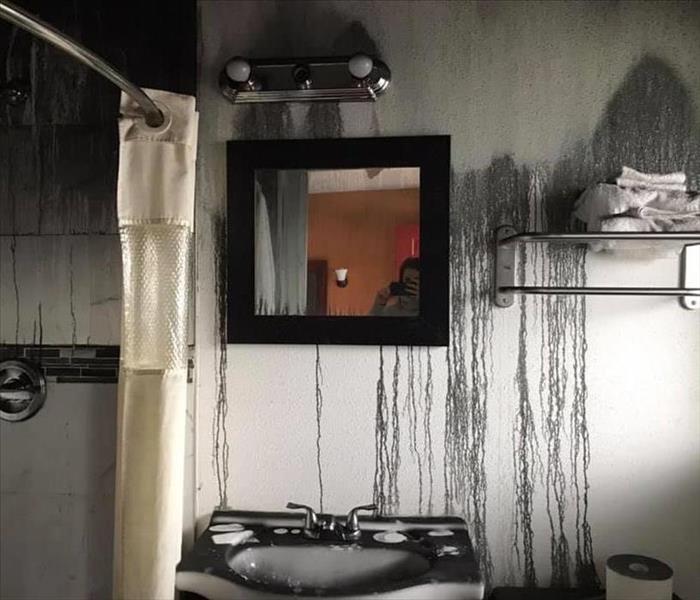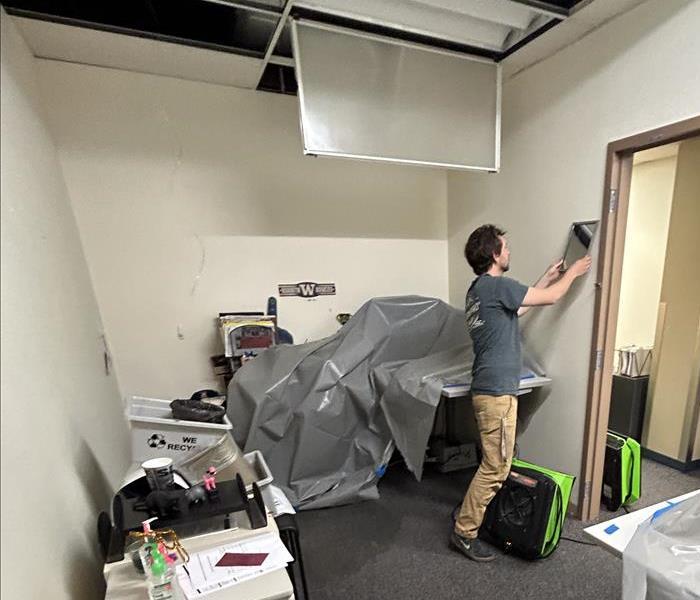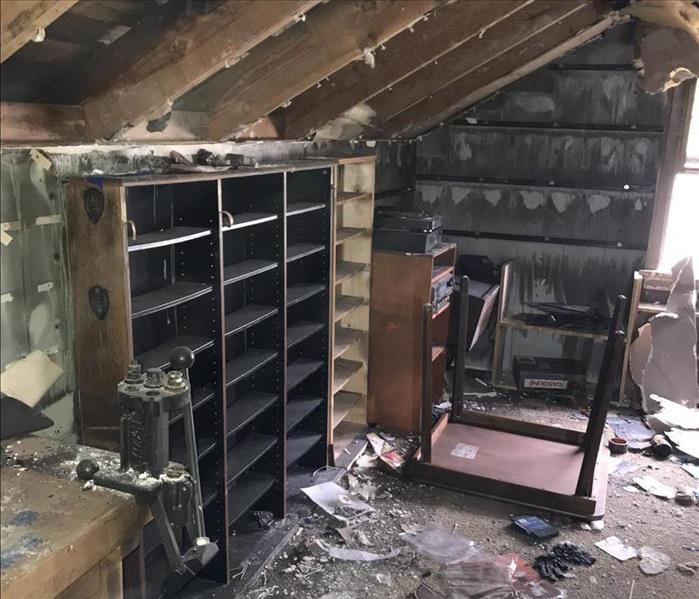Recent Posts
Commercial Spring Cleaning!
5/1/2024 (Permalink)
Spring cleaning time is here, and that does not just include your home. As we head back to work, we know people will be spending more time at work than they do at home. Commercial properties deserve a thorough cleaning as well. This season brings allergies, coughing, sneezing and the buildup of dust is inevitable. From floor to ceiling we will clean your carpets, wipe down your fans, and disinfect during the process. We Are Here To Help!
With the recent COVID-19 outbreak we understand that many employees are not comfortable going back to their place of employment as well as clients and customers coming in to shop. We are currently disinfecting and cleaning commercial properties to help you feel safe. We follow all of the CDC guidelines and we focus on wiping down touch points such as:
- Phones
- Keypad
- Handsets
- Buttons on Equipment
- Desk-tops
- Knobs and Handles
- Light Switches
- Computer mouse and keypad
We also go around spraying with our top of the line electrostatic sprayer to make sure we hit points such as:
- Windows
- Tops of cubicles
- File cabinets, desktops
- Behind furniture
- Around equipment
- Under desk
Commercial Services
5/1/2024 (Permalink)
Your commercial property’s appearance speaks volumes to your clients. So when the need arises for professional cleaning or emergency restoration services, SERVPRO of W. Vancouver / Clark Co. has the training and expertise to help make it “Like it never even happened.”
Commercial Building Restoration Services
SERVPRO of W. Vancouver / Clark Co. responds quickly to your Vancouver fire, water, or mold damage emergency, 24 hours a day. Whether the damage occurs in a small business building or a big box store, we have the training, experience, and equipment to handle the situation. Our national network of 1,700 Franchises gives us access to personnel and resources to respond to any size restoration emergency. Learn more about our commercial restoration services:
Commercial Building Cleaning Services
SERVPRO of W. Vancouver / Clark Co. offers professional cleaning and preventative maintenance for your carpet and upholstery that keeps your property looking its best. Our cleaning system offers a number of specialized cleaning options to match your needs. Whether your business needs a deep cleaning or a persistent odor removed, you can trust SERVPRO of W. Vancouver / Clark Co.. Learn more about our commercial cleaning services:
What is Water Mitigation?
8/29/2023 (Permalink)
Water mitigation refers to the process of reducing or preventing the damage caused by water in a property. This can include water damage caused by floods, leaks, burst pipes, or other sources of water intrusion.
The first step in water mitigation is to identify the source of the water and stop it from entering the property. Once the source has been identified and stopped, the next step is to remove any standing water and dry out the affected areas.
This can involve using specialized equipment such as dehumidifiers, air movers, and moisture meters to ensure that all moisture has been removed from the property. It is important to act quickly in water mitigation to prevent further damage and the growth of mold and mildew.
In addition to drying out the property, water mitigation may also involve repairing any damage caused by the water, such as replacing damaged drywall or flooring.
Overall, water mitigation is an important process for protecting your property from the damaging effects of water. If you experience water damage in your home or business, it is important to contact a professional water mitigation company to help you with the cleanup and restoration process.
Top 3 Things to Throw Out After a Fire
8/29/2023 (Permalink)
 Fire damage left in the aftermath of a residential kitchen fire
Fire damage left in the aftermath of a residential kitchen fire
Items that Need to Be Thrown Out After a Fire
When a fire occurs in your home in Salmon Creek, WA, the process of cleaning up can be daunting. Often, people are unsure of what to throw away. There are several types of items that are often damaged in fires, and they commonly need to be thrown out.
1. Cosmetics
Cosmetics, even if they are packaged, generally need to be stored in clean, cool environments to remain in good condition. Unfortunately, high heat from a fire can cause the packaging of many items, and the items themselves, to melt. As a result, smoke and soot can easily damage the cosmetics, making them unsafe to use.
2. Food
After a fire, it’s often best to throw away the majority of food items in your home. Though some items may be visibly damaged, especially if the fire occurred in the kitchen, some pieces of food may appear to be unharmed. However, even if items are canned or wrapped up, smoke and soot can still affect the quality of food, and consuming food that has been harmed by soot or smoke damage can be hazardous. If you’re unsure whether or not food has been harmed, it’s generally best to discard the item.
3. Medication
Many medications need to be stored in relatively cool environments, and some medications may need to be stored in a refrigerator. During a fire, the temperature in a house can quickly rise. The high heat from a fire can damage the overall quality of the medication, which can ultimately make the medication ineffective and unsafe to consume. If you can document the medications that need to be replaced, you may be able to receive compensation from your insurance company.
Knowing that you may need to throw away cosmetics, food, and medication after a fire can help make the process of sorting through your belongings easier. Often, homeowners whose homes have sustained damage from fires find it useful to work with fire damage restoration experts.
10 Things for a Homeowner to Note Incase of a Storm
8/29/2023 (Permalink)
 A fallen powerline in the aftermath of a storm
A fallen powerline in the aftermath of a storm
1. Storms can cause significant damage to homes, including roof damage, flooding, and fallen trees.
2. Homeowners should ensure that their roofs are in good condition and free of any damage or leaks before a storm hits.
3. It is important to secure any loose outdoor items, such as patio furniture or grills, to prevent them from becoming projectiles during high winds.
4. Homeowners should also clear gutters and downspouts of any debris to prevent water damage from heavy rainfall.
5. It is important to have an emergency kit on hand, including flashlights, batteries, a first aid kit, and non-perishable food and water.
6. Homeowners should have a plan in place for evacuation in case of severe storms or flooding.
7. It is important to have adequate insurance coverage for storm damage, including flood insurance if necessary.
8. After a storm, homeowners should assess any damage and take photos for insurance purposes.
9. It is important to hire a reputable contractor for any repairs needed after a storm.
10. Homeowners should stay informed about weather conditions and any potential storms in their area.
Why SERVPRO?
8/29/2023 (Permalink)
 Call SERVPRO E/W Vancouver at (360)254-0049
Call SERVPRO E/W Vancouver at (360)254-0049
1. Experience: SERVPRO has been in the industry for around 30 years and has a proven track record of success.
2. Availability: SERVPRO is available 24/7, 365 days a year, to respond to emergencies and disasters.
3. Professionalism: SERVPRO technicians are highly trained and certified in the latest mitigation techniques and equipment.
4. Customer service: SERVPRO prides itself on providing excellent customer service and communication throughout the mitigation process.
5. Comprehensive services: SERVPRO offers a wide range of restoration services, including water damage restoration, fire damage restoration, mold remediation, and more.
6. Insurance support: SERVPRO works with insurance companies to help customers navigate the claims process and ensure a smooth experience.
Fire Precautions
7/26/2023 (Permalink)
 The residue left behind in a bathroom from a fire in a residential home.
The residue left behind in a bathroom from a fire in a residential home.
House fires can be devastating, but there are steps you can take to reduce the risk of a fire starting in your home. The following are some precautions you can take to keep your home and family safe.
1. Install and maintain smoke detectors:
Smoke detectors are essential in every home. They can detect smoke and alert you to a fire before it gets out of control. Make sure you have smoke detectors installed in every room of your home, especially in the kitchen and near bedrooms. Also make sure to maintain all smoke detectors in your home. You can have smoke detectors but they will be of no help if not maintained properly.
2. Have a fire extinguisher:
Keep a fire extinguisher in an easily accessible location in case of a small fire. Make sure you know how to use it and that it is up to date.
3. Keep flammable materials away from heat sources:
Keep flammable materials such as curtains, paper, and cleaning supplies away from heat sources such as stoves, heaters, and candles.
4. Don't leave cooking unattended:
Cooking is the leading cause of house fires. Never leave cooking unattended, and keep a close eye on the stove and oven.
5. Don't overload electrical outlets:
Overloading electrical outlets can cause a fire. Make sure you don't have too many appliances plugged into one outlet and use surge protectors.
6. Have an escape plan:
Make sure you have an escape plan in case of a fire. Practice the plan with your family so everyone knows what to do in case of an emergency.
By taking these precautions, you can reduce the risk of a fire starting in your home and keep your family safe in the event of a fire occurring.
5 Ways to Remove Gum from Carpet
5/24/2023 (Permalink)
Gum is one of the trickiest substances to get out of carpet due to how sticky and expandable it is it can grab on to each individual fiber of the carpet. If you ever find yourself in a sticky situation there are 5 tried-and-true ways to remove gum successfully with little effort.
1. WD-40
Spray a generous amount on the gum stain. Let it sit for 5-10 minutes. Then wipe the stain in the same direction. After a little bit of wiping the gum should be gone leaving nothing behind showing it was there.
2. Vinegar
Put a generous amount on the gum stain. Let the stain soak in the vinegar. Then wipe away gently at the spot until it is wiped away.
3. Hairspray
Spray a generous amount on the gum. Wait for the hairspray/gum to harden. Once hardened it should be able to be picked right out of the carpet best suggest to use a butter knife to scrape the gum away.
4. Ice
Place one to two ice cubes on the gum. Wait for the gum to freeze/harden. Once the gum has hardened you will be able to scrape the gum away with a butter knife.
5. Toothpaste
Apply toothpaste to the gum. The tooth paste should break down the stickiness. Once the gum is no longer sticky from the active ingredients in toothpaste it should be able to be removed without problem.
There are many other ways to remove gum from carpet these are the just the few that have been proven as the more efficient as well as none damaging options. No longer fear the sticky mess that gum leaves as long as you have these few tricks up your sleeve!
Commercial Water Damage
5/24/2023 (Permalink)
 One of our Crew Chiefs, Alex, working hard cleaning up the damage left behind by a commercial water damage
One of our Crew Chiefs, Alex, working hard cleaning up the damage left behind by a commercial water damage
Water damage is a common problem that can occur in commercial buildings. It can be caused by a variety of factors including floods, leaks, burst pipes, and storms. When water damage occurs it can cause significant damage to the building and its contents. In this blog post, we will discuss the importance of addressing water damage in commercial buildings and the steps that should be taken to mitigate the damage.
The Importance of Addressing Water Damage in Commercial Buildings
Water damage can have a significant impact on commercial buildings. It can cause structural damage, mold growth, and damage to equipment and inventory. Mold growth, for example, can cause respiratory problems and other health issues. Therefore, it is important to address water damage as soon as possible to prevent further damage and ensure the safety of those who work in the building.
Steps to Mitigate Water Damage in Commercial Buildings
- Identify the Source of the Water Damage
The first step in mitigating water damage is to identify the source of the water. This could be a leaky roof, burst pipe, or flooding. Once the source of the water is identified, steps can be taken to stop the water from entering the building.
2. Remove Standing Water
If there is standing water in the building, it should be removed as soon as possible. This can be done using pumps or wet vacuums. The longer the water sits the more damage it can cause.
3. Dry the Area
After the standing water has been removed; the affected area should be dried as quickly as possible. This can be done using fans, dehumidifiers, and other drying equipment. It is important to ensure that the area is completely dry to prevent mold growth.
4. Clean and Disinfect
Once the area is dry it should be cleaned and disinfected. This will help to prevent mold growth and remove any bacteria or other contaminants that may be present.
5. Repair and Restore
Finally any damage that has been caused by the water should be repaired and restored. This may include replacing damaged drywall, flooring, or other materials. It is important to ensure that the repairs are done correctly to prevent future water damage.
Water damage can have a significant impact on commercial buildings. It is important to address water damage as soon as possible to prevent further damage occurring or to reduce the risk of mold growth.
October is Fire Prevention Month
10/4/2022 (Permalink)
 100 years of Fire Prevention Month!
100 years of Fire Prevention Month!
October is Fire Prevention Month! The goal of Fire Prevention Month (and week October 9th - 15th) is to raise fire safety awareness, and help ensure your home and family is protected. In 1922, the National Fire Protection Association (NFPA) named the second week of October Fire Prevention Week in commemoration of the Great Chicago Fire in 1871. Today, we celebrate Fire Prevention Week and Month by raising fire safety awareness and educating families, students and communities across the United States. During this month, fire departments provide education to their communities, and encourage parents and loved ones to practice fire prevention and whole home safety.
Did You Know?
Fire Prevention Week is the perfect time to educate and talk with your whole family about fire safety – including testing alarms, changing the batteries or upgrading to 10-year sealed battery alarms, knowing how to use a fire extinguisher and escape route planning.
- 3 of every 5 home fire deaths resulted from fires with no working smoke alarms
- Less than 50% of homeowners have an escape plan*
- Carbon monoxide (CO) is the #1 cause of accidental poisoning in the US
- 60% of consumers do not test their smoke and CO alarms monthly*
- Only 47% of people report having CO alarms in their home
- Unattended cooking is the #1 cause of home fires
This information was provided by First Alert





 24/7 Emergency Service
24/7 Emergency Service


